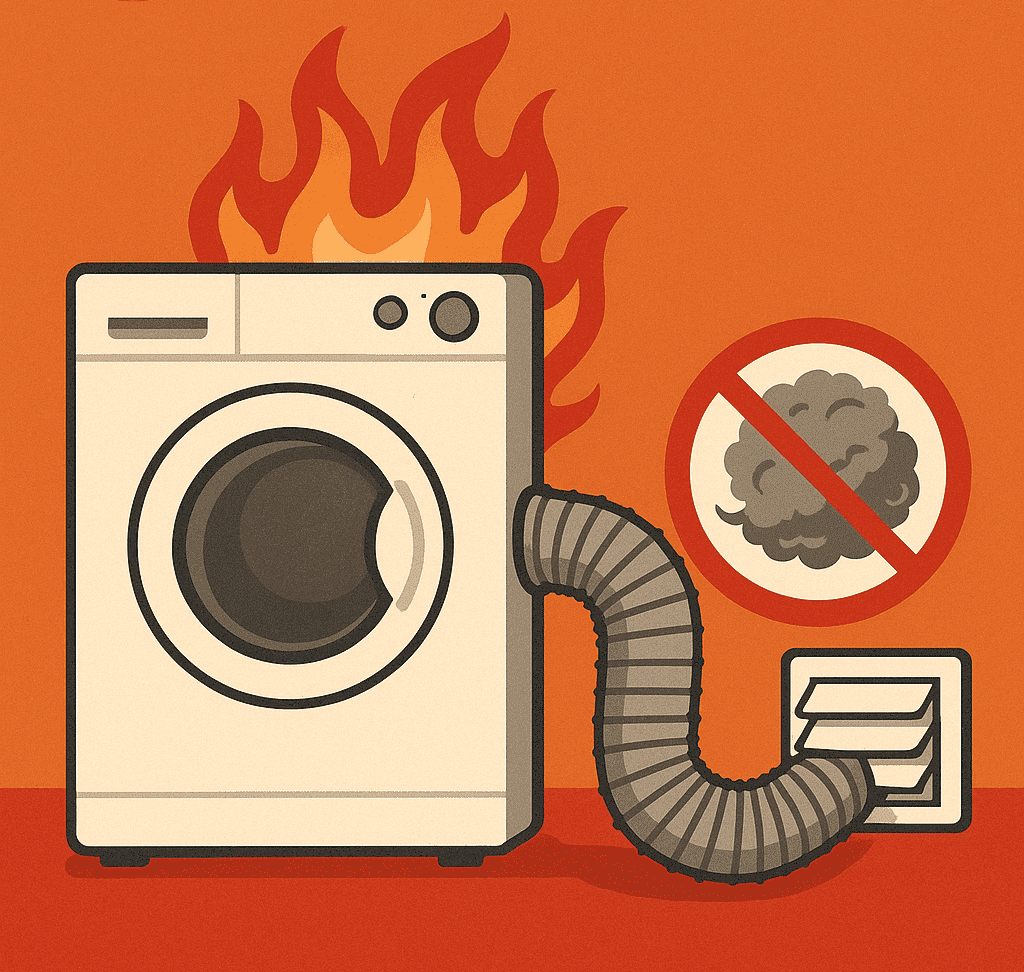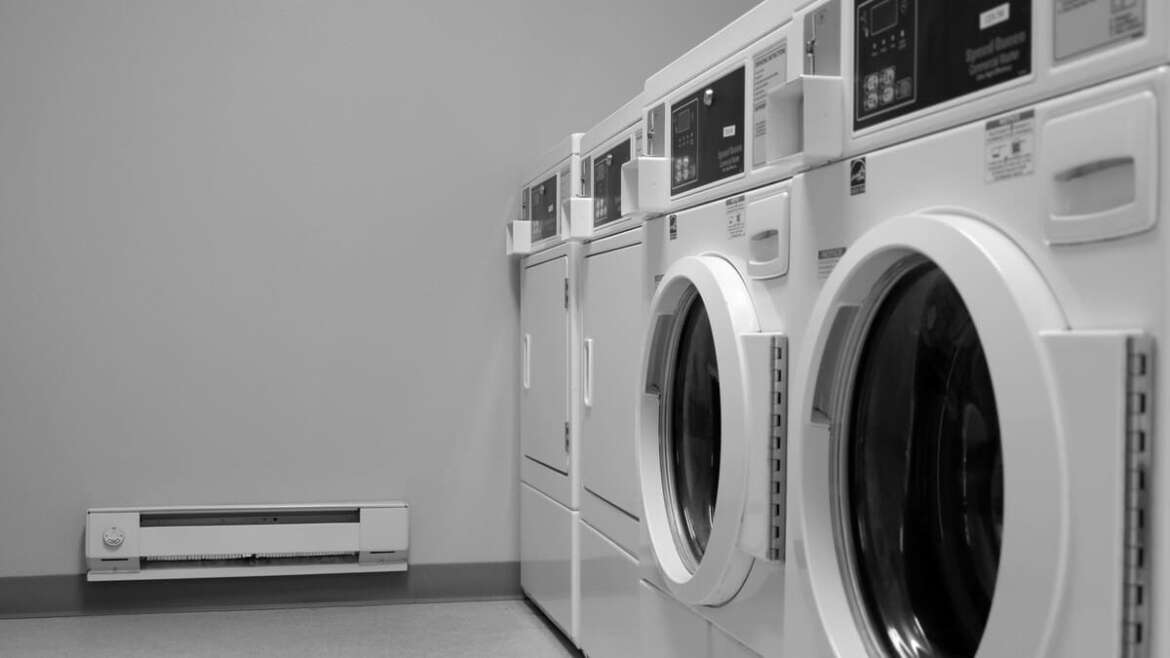
When it comes to home maintenance, one critical issue often flies under the radar: dryer vent safety. While it may seem like a simple part of your laundry setup, the venting system plays a huge role in protecting your home from fire, reducing energy waste, and keeping your appliances in good shape. The reality is stark — thousands of house fires each year are linked to dryer exhaust problems that could have been prevented.
This article breaks down essential statistics, identifies hidden risks, and offers practical steps to ensure your clothes dryer vent safety is never compromised.
Why You Should Care About Dryer Vent Safety
A typical dryer produces a high volume of heat and moisture. To keep things working properly, this hot air must be vented outside through a dedicated duct. However, over time, lint, pet hair, and dust can accumulate inside the tubing — especially in longer setups or concealed installations.
This buildup reduces airflow, overheats the appliance, and turns the vent into a fire hazard. It also increases the chance of mechanical failure and can significantly shorten the lifespan of your dryer. Proper maintenance helps protect your home and ensures consistent performance.
Homes using compact systems like a periscope dryer vent require special attention, as bends and tight turns make it easier for lint to get trapped and airflow to be restricted. Addressing these designs with dedicated periscope dryer vent safety checks is vital.
The Numbers Behind the Risk
According to the U.S. Fire Administration (USFA):
- Around 2,900 home fires each year are linked to dryer-related causes
- The majority occur in fall and winter months
- 34% result from failure to clean the vent system
- Lint is the most common material to ignite
- Total damages amount to roughly $35 million annually
These aren’t just numbers — they represent preventable disasters. A single neglected vent can lead to property loss or worse. Following dryer vent safety standards from the National Fire Protection Association (NFPA) can significantly reduce these risks.
 Warning Signs of a Clogged Dryer Vent
Warning Signs of a Clogged Dryer Vent
The good news is, your system will often give off signals when maintenance is overdue. Look out for:
- Laundry taking longer than one cycle to dry
- Unusual warmth or heat coming from the exterior of the dryer
- Burning or musty odors when the machine is running
- Humidity or fogging on nearby windows or walls
- Lint gathering near the wall outlet or outside vent flap
In homes with indoor dryer vent setups — where the hot air is vented into a filtered box indoors — the risks are different but no less serious. Improper airflow management here can lead to moisture buildup and decreased air quality. Maintaining indoor dryer vent safety means keeping the entire path clear and dry at all times.
Dryer Vent Safety Tips to Implement Today
You don’t need to wait for a problem to act. These simple dryer vent safety tips can help:
- Clean your dryer’s exhaust system at least once a year
- Use rigid or semi-rigid metal ducts — never plastic or foil
- Make sure the outside exhaust flap opens freely and isn’t blocked by snow, leaves, or nests
- Regularly clean the lint trap after every use
- Schedule a professional inspection if your vent path is long or has multiple turns
If you’re unsure about your setup, consider calling a technician to verify that your system meets all modern dryer vent safety standards.
How Often Should You Clean Your Dryer Vent?
While annual cleaning is the minimum recommendation, certain conditions may require more frequent attention:
- If you have multiple pets that shed
- If your laundry load is consistently large
- If your vent hose run is long or has many bends
- If you’re using a stacked or compact dryer system
- If you notice your dryer runs longer than it used to
Dryer manufacturers often include cleaning intervals in their manuals. Following those guidelines helps maintain optimal dryer vent hose safety and avoids warranty voids.
The Hidden Costs of Ignoring Vent Maintenance
While fire is the most serious threat, a neglected dryer vent can have other costly consequences:
- Higher utility bills: Blocked airflow forces the machine to work harder
- Appliance wear and tear: Overheating and prolonged cycles wear out internal components
- Moisture damage: Backed-up humidity can damage paint, drywall, or flooring
- Poor indoor air quality: Dust and fibers may escape into your living space
Scheduling professional service helps identify and resolve these issues before they escalate.
What a Professional Dryer Vent Cleaning Includes
Technicians typically provide a comprehensive service that involves:
- Inspecting the entire length of the vent system
- Removing compacted lint and debris
- Checking connections for leaks, tears, or improper angles
- Testing airflow to confirm it meets safety thresholds
- Offering advice on improving clothes dryer vent safety in your specific setup
Some companies may also provide thermal imaging or camera inspections for hard-to-access installations.
Combine Dryer Vent and HVAC Maintenance
Your dryer vent is part of your home’s overall ventilation strategy. Consider bundling this service with other HVAC checks, such as:
- Furnace inspections
- Air duct cleaning
- Filter replacements
- Indoor air quality assessments
A coordinated approach boosts efficiency across your entire system and ensures cleaner, healthier air throughout your home.
Final Thoughts
Dryer vent safety is a small piece of the home maintenance puzzle that carries major consequences. Whether your dryer vents outside or uses an indoor setup, routine care can help you avoid fires, save energy, and extend the life of your appliance.
By following basic dryer vent safety tips and keeping an eye on warning signs, you’ll make your home a safer and more efficient place. Ready to schedule a cleaning? Contact Promaster for expert service and make dryer vent safety part of your yearly checklist.



